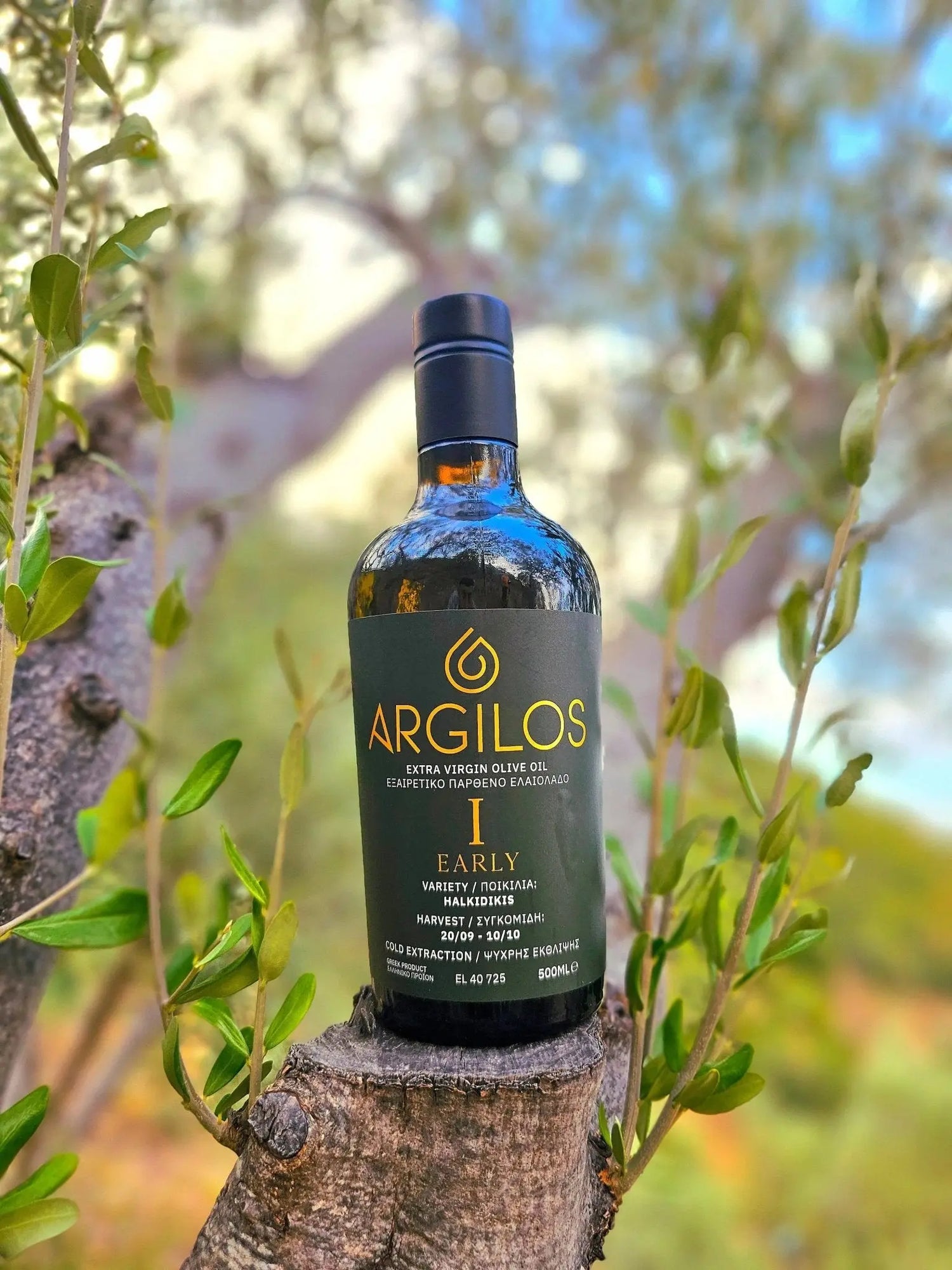The DNA of ARGILOS I Early Harvest Greek EVOO
Discover the essence of Argilos Greek Extra Virgin Olive Oil. Our DNA analysis reveals its unparalleled purity and rich heritage, rooted in the fertile lands of Mount Pangaion. Dive into the story of how our olives are meticulously grown, harvested, and pressed to create a taste that's as authentic as the landscape it comes from.

The DNA of ARGILOS I -EARLY
Acidity: 0.31%
Peroxide Value: 4.89 mEq O2/Kg
Extinction coefficient K232: 1.62
Extinction coefficient K268: 0.12
MOSH (C10-C50): Not Detected
MOAH (C10-C50): Not Detected
GC-FID: Not Detected
Pesticides residue: <0.01
Metrics Guide
1. Acidity: 0.31%
What It Means:
Acidity measures the free fatty acid (FFA) content in the olive oil, typically expressed as a percentage of oleic acid. It indicates the extent of oil degradation due to enzyme activity or poor storage conditions.
Why It's Important:
Low acidity is a hallmark of high-quality extra virgin olive oil. The limit for extra virgin olive oil is 0.8%, and Argilos' 0.31% signifies exceptional quality, freshness, and careful handling during production.
2. Peroxide Value: 4.89 mEq O₂/kg
What It Means:
This measures the amount of peroxides (primary oxidation products) in the oil, which form when oil begins to oxidize. It's expressed in milliequivalents of oxygen per kilogram of oil.
Why It's Important:
A low peroxide value is a sign of freshness and good storage conditions, as high levels indicate rancidity. The acceptable limit for extra virgin olive oil is 20 mEq O₂/kg, and Argilos' value of 4.89 reflects its excellent oxidative stability.
3. Extinction Coefficient (K232): 1.62
What It Means:
K232 measures the absorbance of UV light at 232 nm, indicating the presence of conjugated dienes formed during oxidation or refining.
Why It's Important:
Low values suggest minimal oxidation and no refining. The limit for extra virgin olive oil is 2.50, and Argilos' value of 1.62 confirms its purity and high antioxidant content.
4. Extinction Coefficient (K268): 0.12
What It Means:
K268 measures absorbance at 268 nm, which reflects the presence of conjugated trienes and secondary oxidation products.
Why It's Important:
Lower values indicate a high level of stability and freshness, with no adulteration or excessive aging. The maximum allowable value for extra virgin olive oil is 0.22, and Argilos' 0.12 demonstrates exceptional quality.
5. MOSH (C10-C50): Not Detected
What It Means:
MOSH (Mineral Oil Saturated Hydrocarbons) refers to a class of chemical compounds that may contaminate food from packaging, processing, or environmental exposure.
Why It's Important:
The absence of MOSH indicates that Argilos Extra Virgin Olive Oil is free from harmful contamination, ensuring safety and natural purity.
6. MOAH (C10-C50): Not Detected
What It Means:
MOAH (Mineral Oil Aromatic Hydrocarbons) are another class of contaminants often associated with industrial sources and are considered carcinogenic.
Why It's Important:
The absence of MOAH confirms Argilos' commitment to health and safety, providing peace of mind for consumers concerned about contamination.
7. GC-FID: Not Detected
What It Means:
Gas Chromatography-Flame Ionization Detection (GC-FID) tests for chemical adulteration by identifying the presence of non-olive oils or synthetic additives.
Why It's Important:
A "Not Detected" result confirms that Argilos is a true extra virgin olive oil, free from dilution or tampering.
8. Pesticides Residue: <0.01
What It Means:
This measures the trace amounts of pesticides present in the oil. "<0.01" indicates that residues are below the detection limit or present in negligible quantities.
Why It's Important:
Low or undetectable pesticide levels signify environmentally conscious farming practices and ensure the oil is safe for consumption.
